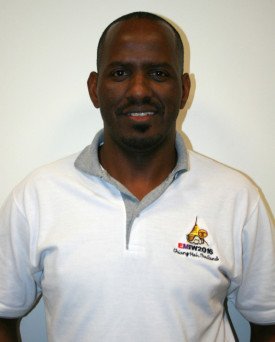PhD defence by Charles Muturia Lichoro
On Friday the 13th of December Charles Muturia Lichoro will defend his PhD thesis in Geophysics from the University of Iceland in the Main building, room The Aula from 13:00-15:00.
The thesis is titled:
Regional Geothermal Characterization of Northern Kenya Rift from Resistivity and Gravity
Opponents are:
Dr. Egidio Armadillo, professor at the University of Genova
Dr. Peter Omenda, consultant
Supervisors are:
Knútur Árnason, geophysicist at ISOR
William Cumming, consultant at Cumming Geoscience, USA
Andri Stefánsson, professor at the School of Engineering and Natural Sciences Faculty of Earth Sciences at the University of Iceland.
Other members of the PhD committee are Bryndís Brandsdóttir, Research Scientist at the School of Engineering and Natural Sciences at UI and Lúðvík S. Georgsson, director of the United Nations University Geothermal Training Programme.
The ceremony will be chaired by Dr. Magnús Tumi Guðmundsson, professor and Head of the School of Engineering and Natural Sciences Faculty of Earth Sciences at the University of Iceland.
Everyone is welcome to attend
Abstract
An extensive geophysical survey comprising over 400 MT and 515 gravity stations on the Korosi, Paka and Silali volcanoes in the northern Kenya rift was conducted in order to assess the occurrence of geothermal resources in the context of the geophysics of the major volcanic centers. Additional study has also included speculation of magma detectability below the volcanoes.
Resistivity data has been interpreted using 1D joint inversion of magnetotelluric (MT) and co-located transient electromagnetic (TEM) which has revealed a resistivity pattern consistent with the existence of several geothermal systems within the study area. Each geothermal system is characterized by a relatively resistive 100 Ωm surficial layer overlying a ∼ 10 Ωm low resistivity zone interpreted as the hydrothermally altered clay cap of the system. Low resistivity is also correlated with clay-rich volcanoclastics deposited on the margins of the rift adjacent to the volcanoes. The cap overlies a higher resistivity zone of about 60 Ωm with a top at about 1000 m depth, interpreted as a potential high temperature alteration zone. The trend of moderate high resistivity at the depth of the potential reservoir corresponds to the zone of intense faulting and fracturing as imaged on the surface.
Gravity data has been analysed through estimation of shallow density by testing the correlation of measured gravity with topography, reviewing results of earlier density measurements of surface rocks in the Kenya Rift, comparison to regional gravity surveys that constrained larger scale deeper density contrasts and 2D gravity modeling correlated with the MT resistivity pattern. Gravity models reveal a dominant 10 to 15 km wide gravity high of 8 mGal amplitude striking NNE along the inner rift corresponding to high resistivity outlined at 2 km depth by recent MT studies. Gravity lows due to structures shallower than 2 km depth at the Paka and Korosi volcanoes have been interpreted as low density bodies within their edifices, likely to consist of either unaltered near-surface pyroclastics or deeper tuffs altered at 60 to 180°C to hydrothermal smectite clay. The high resistivity, low density near-surface rocks on the flanks are interpreted to represent unaltered pyroclastics above the water table, whereas low resistivity, low density bodies underneath the Paka and Korosi volcanos indicate low density tuffs, hydrothermally altered to hydrated smectite clay. Away from the volcanoes on both East and West low density and low resistivity anomalies flanks the central gravity high. The deeper high density zone below the volcanic inner rift is likely to be a combination of higher temperature, low porosity alteration associated with geothermal reservoirs and/or denser rocks related to intrusions.
Surface fissure swarm correlates with both high gravity and resistivity south of Paka volcano but northwards between Paka and Silali volcanoes, there appears inconsistency where the fissure swarm strikes NE but both gravity and resistivity shows a feature west of the currently active fissure zone. This suggests that the rift has recently moved eastwards.
A preliminary review of geoscientific data has been made to evaluate the developed geothermal systems within the Kenya rift and use them as analogs for the geothermal prospects. The comparisons are based on thermal features, geological structures, gravity anomalies and resistivity signatures. Further, 2D synthetic modelling was performed to speculate on the size and depth of magma beneath the volcanoes and demonstrate what can be resolved at depth and what cannot. This has also been used to illustrate the limitations of 1D inversion and test the depth and size of magma that can be detected.


